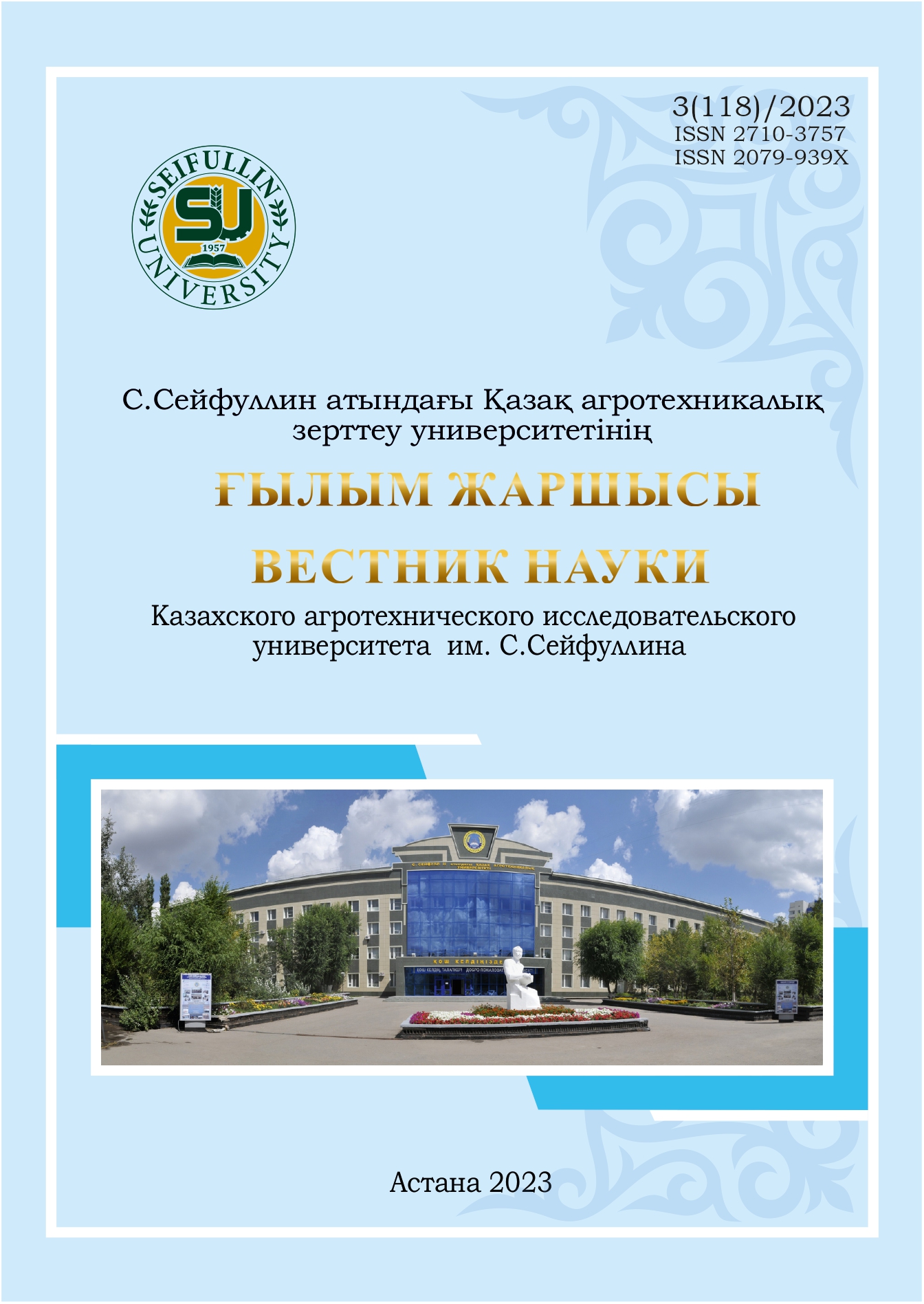GERMINATION OF SEEDS OF SPRING WHEAT VARIETIES UNDER NATURAL AND DROUGHT CONDITIONS
DOI:
https://doi.org/10.51452/kazatu.2023.3(118).1503Keywords:
Spring soft wheat; variety; seeds; germination; drought; steadiness; morphological featuresAbstract
The manifestation of stable morphophysiological reactions at the initial stages of growth and development of plants is important in the selection of promising spring soft wheat genotypes for drought in the current conditions of world moisture deficiency.
The article presents the results of studies to identify changes in the morphological characteristics of seedlings of spring wheat genotypes of medium ripening, recommended for cultivation in the northern regions of Kazakhstan under natural conditions and under conditions of artificial drought stress.
Under natural conditions of drought, a negative reaction of spring soft wheat varieties was noted, including a deterioration in the growth and development of shoots, which led to a decrease in the germination viability index (SVI - up to 8.86%). At the same time, under the created conditions of drought, drought-resistant genotypes intensively increased the root system, in comparison with the vegetative mass, that is, the ratio of roots and shoots RSR - 0.23 units, increased relative to the control variant.
Researchers have proven a direct dependence of high drought resistance of seedlings on the length of the roots (r=0.79) and the angle of root formation (r=0.71).
In this regard, when choosing drought-resistant varieties of spring common wheat, it is necessary to focus on the morphological characteristics of seedlings, especially on the intensity of development of germ roots and the angle of its formation.

